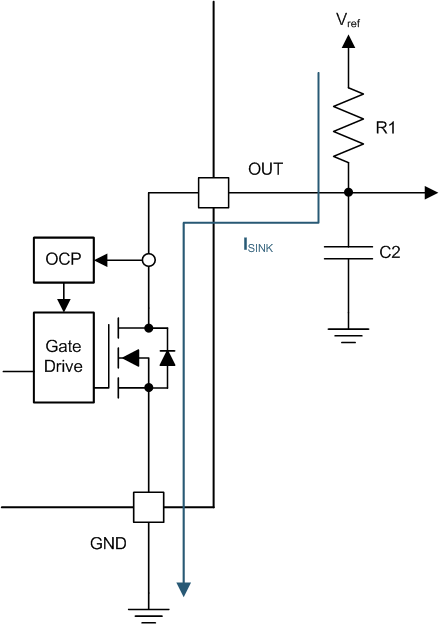SLIS162I December 2014 – February 2023 DRV5013-Q1
PRODUCTION DATA
- 1 Features
- 2 Applications
- 3 Description
- 4 Revision History
- 5 Pin Configuration and Functions
- 6 Specifications
- 7 Detailed Description
- 8 Application and Implementation
- 9 Device and Documentation Support
- 10Mechanical, Packaging, and Orderable Information
Package Options
Mechanical Data (Package|Pins)
Thermal pad, mechanical data (Package|Pins)
Orderable Information
7.3.4 Output Stage
#SLIS1507131 shows the DRV5013-Q1 open-drain NMOS output structure, rated to sink up to 30 mA of current. For proper operation, use #SLIS1505991 to calculate the value of pullup resistor R1.

The size of R1 is a tradeoff between the OUT rise time and the current when OUT is pulled low. A lower current is generally better, however faster transitions and bandwidth require a smaller resistor for faster switching.
In addition, make sure that the value of R1 > 500 Ω so that the output driver can pull the OUT pin close to GND.
Vref is not restricted to VCC. The allowable voltage range of this pin is specified in the GUID-720FE3D7-33A2-49DE-AAD7-DE9137C81B16.html#TITLE-SLIS150SLIS1504651.
 Figure 7-7 NMOS Open-Drain Output
Figure 7-7 NMOS Open-Drain OutputSelect a value for C2 based on the system bandwidth specifications as shown in #SLIS1501741.

Most applications do not require this C2 filtering capacitor.